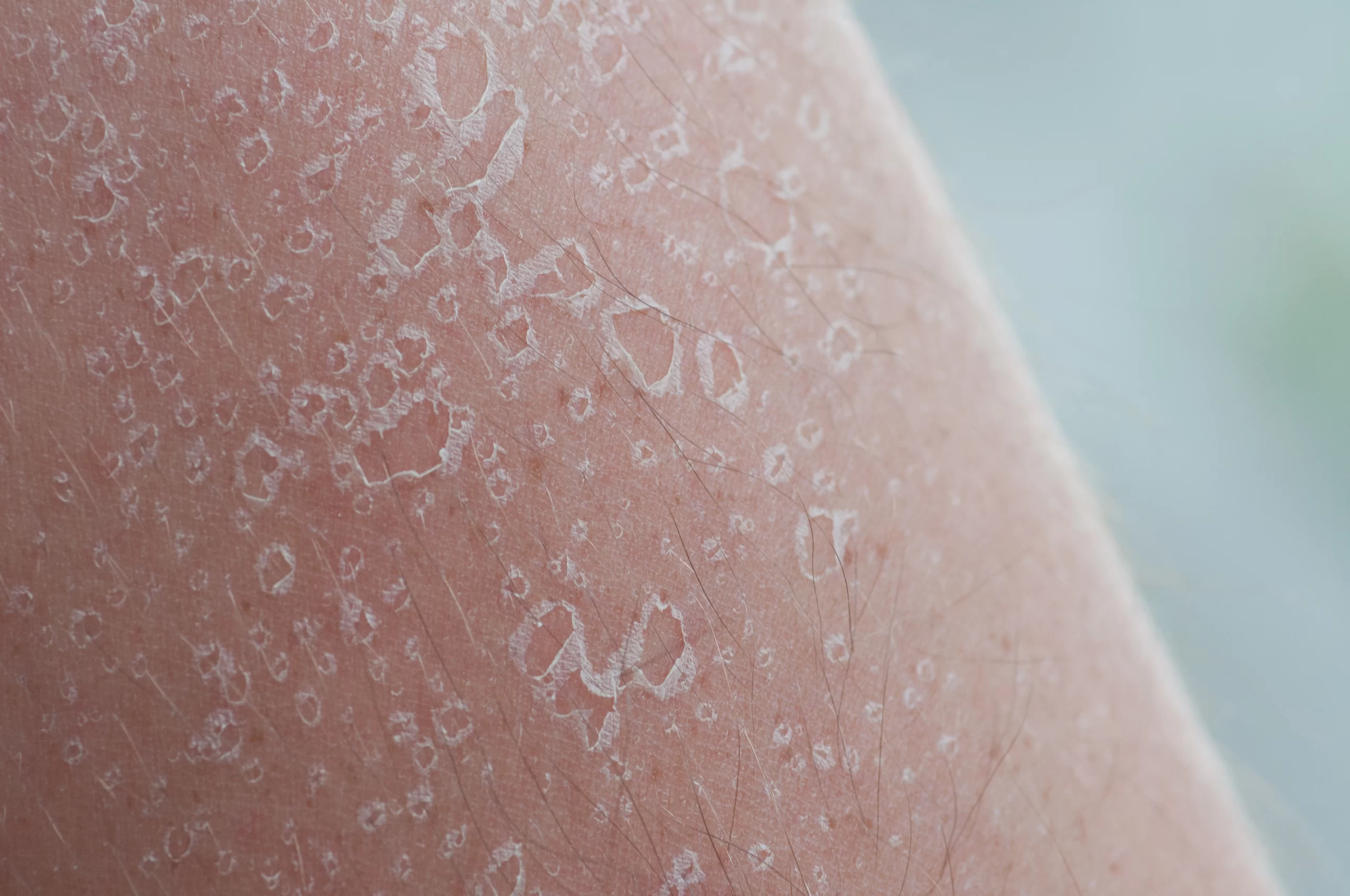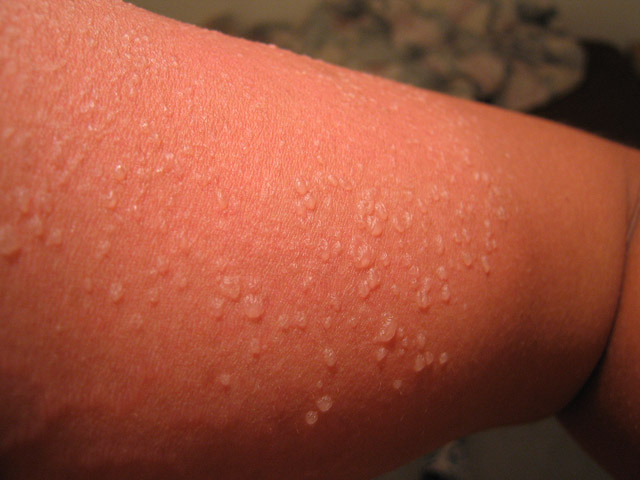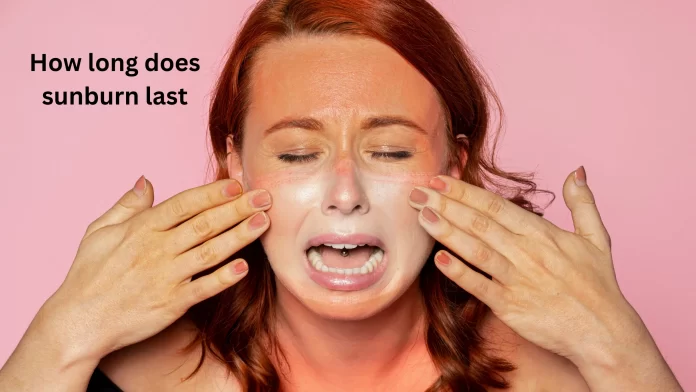We can’t avoid going out in the sun totally. And sometimes, it turns out that prolonged exposure to UV rays can cause harm to our skin. No wonder, science has developed SPF creams to tan removals for safety. But if your situation has already worsened with unwanted sunburns and pain, you must be willing to know how long does sunburn last.
A plethora of alternatives can save you from sunburns and you can get back your old healthy skin. But how soon? Give this article a read to know that.
What is sunburn?
Sunburn is a skin condition commonly faced by every individual in their lifetime. It happens because of the overexposure of the skin to ultraviolet radiation from the sun or other artificial sources. The skin that is exposed to the rays gets red and erupts. The individual can also feel the pain in the skin. The UV rays disturb the DNA in the skin cells, generate an inflammatory response to it, and cause sunburn.
Both kinds of UV radiation, including UVA and UVB, can cause sunburn. It can make you suffer from long-term skin damage, early aging, and sometimes skin cancer as well. Taking care and incorporating preventive care into the skin can protect your skin from sunburn.
What Causes Sunburn?
Sunburns are caused due to overexposure to the sun’s UVA and UVB rays. Although the presence of natural Melanin in our skin protects it from sunburns to a certain extent, beyond that skin pigmentation, discoloration, rash, etc. start to occur.
How Long Does Sunburn Last?
Here is the thing: how long does sunburn last depends on the intensity of the sunburn. So let’s dive in to check what’s your level of sunburn:
-
First-degree Sunburn:
This is the most typical and mild sort of sunburn that lasts for about 3 to 5 days.

Symptoms:
- Skin Pigmentation
- Pain
- Itching
- Skin Peeling
2.Second-degree Sunburn:
If you experience a sharp twinge of pain or inflammation whenever you touch the affected area, you most probably have a second-degree sunburn. This happens because now the UV rays have affected the second layer of the skin- the dermis. Such a type of sunburn lasts for 3 to 4 weeks.

Blisters
Symptoms:
- Red or Pink Rashes
- Burning Sensations
- Sharp pain on touching the affected area
- Blistering (small pores filled with clear fluid)
3. Third-degree Sunburn:
This is the most severe type of sunburn that calls for medical treatment. Though it develops rarely but deteriorates all three layers of the skin- epidermis, dermis, and hypodermis. If you have got sunburns of this high intensity, they might last for 2 months or more.
Symptoms:
- Itchiness in blisters (small pores filled with clear fluid)
- Dark brown leathery burns
- Skin Swelling
- Soreness or chronic pain in affected areas
Other Factors
Apart from the intensity or severity of sunburns, the under-mentioned factors also become a deciding factor for how long does sunburn last–
Age: Infants are more prone to sunburns due to under-developed skin.
Body Composition & Chemical Release: Lower release of Melanin or Hyperpigmentation can affect the duration of recovery.
Genetic Skin Disorders: Albinism, Xeroderma Pigmentosum, Melasma, etc. can result in delayed recovery.
Hormonal Changes: Medications and pregnancy can also result in hormonal changes affecting sunburn treatment.
Surrounding Temperature: The temperature and climatic condition of your residing area also affect sunburn treatment.
What To Do Immediately If You Feel Severe Heat/Pain?
If you’re experiencing high pain, itchiness, or inflammation on your skin due to sunburns, do follow the below-stated steps for immediate relief-
- Get yourself out of the sunlight as soon as possible.
- Take a bath with cold water if needed.
- Wear loose and fresh clothes.
- Take a soft cotton cloth, dampen it in cold water or cold raw milk, and apply it to the affected areas.
- Make sure to take the cloth off after every few minutes to avoid numbness and pain.
In case you’re outside, wash the affected area with cold water or cold raw milk.
Tanning v/s Sunburn
Tanning and sunburn have the same consequences and can generate the same level of skin problems. In the present times, people opt for deliberate tanning. The system of tanning lamps and indoor tanning beds in an attempt to develop more tolerance to UV rays has made situations severe for many. In fact, the International Agency for Research On Cancer (IARC) tags these methods of artificial tanning as a cause of skin cancers.
Precautions For Sunburns
So far, we’ve discussed how long sunburn lasts and what you can do to treat it. But there are some ground rules that you must follow if you want to recover fast from sunburns-
- Don’t apply chemical and cosmetic products to affected areas.
- Wear loose and comfortable clothes with full sleeves.
- Don’t pop the blisters as the infection from the fluid can spread further to your skin. Ask your doctor for a soothing and cooling lotion or medication.
- Ensure not to rub your skin harshly.
- Don’t apply anything and everything without researching and consulting your doctor/dermatologist.
- Remember that petroleum jelly will only increase your pain and irritation due to sunburns.
How Bad Can A Sunburn Turn?
Sunburn severity depends on the time of exposure to sun and UV rays. It can be mild to severe. Mild sunburn is common and can cause redness and slight swelling to the skin. Recovering from the mild sunburn will take a few days to a few weeks. You can take the help from the pain relievers and aloe vera to cool it down.
The next sunburn type is moderate, which can cause pain, swelling, and redness. This will take a little longer to recover, up to a few weeks or more than that. You can keep your body hydrated and take proper pain relievers to get relief in this stage of sunburn.
A severe level of sunburn is an alarming sign to take medical support from a professional, It can lead to fever, nausea, heatstroke, and blistering-like symptoms. In some situations, people are also required to be admitted to hospitals. This stage needs extra care. Also, exposure to UV radiation for a long time can permanently damage the skin and can cause situations like skin cancer that can be life-threatening.
Sunburns can be seen with a number of visible patches and skin infections. Consult a dermatologist if you witness any of the below-mentioned symptoms-
- Pus filled blisters
- Reduce urination
- Dizziness
- Dry mouth
- Fever due to pain
- Unhealed blisters
- Wound cut on sunburnt area
- Inflammation near mouth
- Loss of Appetite
- Fatigue
If left untreated, sunburns can turn severe to the extent that they can cause skin cancer (such as Melanoma) and sun poisoning.
When should you call the Doctor?
Here are some alarming signs that need to be treated under the expertise of a doctor –
- Constant Pain –If you experience the pain and it worsens daily, you can get help from the doctor.
- Infection –If you find signs of infection like excessive redness, swelling, fever, pus, or some other infection.
- Fever & Dizziness – If your sunburn is causing the symptoms of fever, vomiting, and heatstroke-like situations.
- Swelling –Swelling can also be a symptom. If it is increasing and there is no effect after a few days as well, then calling a doctor is the only option.
These are the signs that require urgent action & treatment care by medical professionals.
Conclusion
Sunburn is a harmful skin condition that can make you feel uneasy and uncomfortable. Exposure to sun rays for a longer duration can cause severe health issues like skin cancer. It is important to take care of your skin on priority to avoid sunburn-related issues so that it will not become a complicated health challenge for you. Wear sun-protective clothing and sunglasses to protect your skin from sunburn. Use sunscreen to avoid discomfort when you go out during the peak hours. Take advice from a doctor if you feel symptoms are getting unavoidable.
Frequently Ask Questions
Q1: How long does sunburn remain on average?
Ans: Sunburn normally lasts for about 3 to 5 days. However, the period can vary relying on the severity of the sunburn and character elements.
Q2:How can I make sunburn go away faster?
Ans: To help sunburn heal extra quickly, you can take cool baths, apply moisturizing creams, and use over the counter pain relievers like ibuprofen. Staying hydrated and keeping off in addition to solar exposure is crucial.
Q3: What factors have an impact on how long sunburn lasts?
Ans: Several factors can affect the period of sunburn, including the individual’s pores and skin type, the severity of the sunburn, and whether or not proper treatment and sun safety measures are taken.
Q4: When must I see a doctor for sunburn that won’t heal?
Ans: If your sunburn doesn’t improve after per week, or if it becomes infected with blisters, pus, or expanded ache, it’s vital to consult a healthcare professional. Severe sunburn can have complications that require scientific attention.





